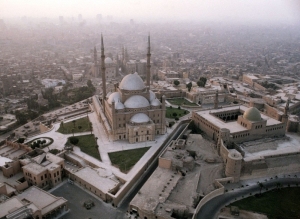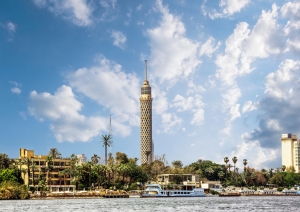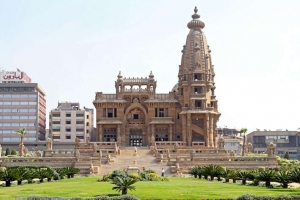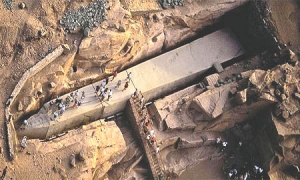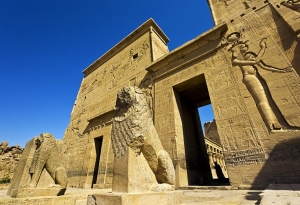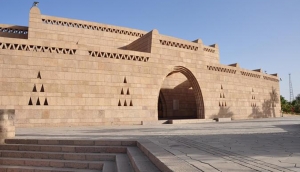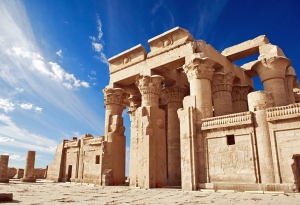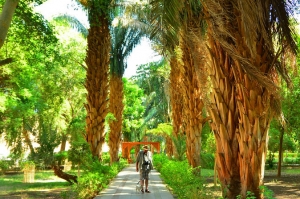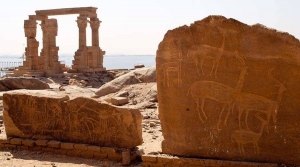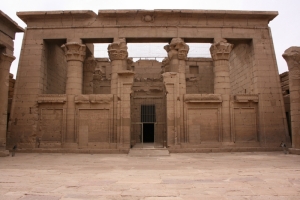+2 0122-345-3028
This email address is being protected from spambots. You need JavaScript enabled to view it.
Super User
citadel
The citadel
The Citadel is the natural focus of a visit to Islamic Cairo. It represents the most dramatic feature of Cairo’s skyline: a centuries-old bastion crowned by the needle-like minarets of the Great Mosque of Mohamed Ali, This fortified complex was begun by Salah El- Din, the founder of the Ayyubid dynasty. Slah El-Din reign (1171-93) saw much fortification of the city, though it was his nephew, Al-Kamil , who developed the Citadel as a royal residence, later to be replaced by the palaces of Sultan Al Nasir.
The main features of the Citadel as it is today, however , are associated with Mohammd Ali, a worthy successor to the Mamlukes and Turks. In 1811 he feasted 470 leading Mamluks in the Citadel palace, bade them farewell with honours, and then had them ambushed in the sloping lane behind the Bab al-Azab, the locked gate opposite to the Akhur Mosque. Nowadays the main entrance to the Citadel is at a higher level, closer to the centre of the complex. There is superb view of the entire city from the Citadel’s terrace
Mohammed Ali’s Mosque
Designed by the Greek architect Yussuf Bushnaq, The Mohammad Ali (Alabaster) Mosque in the Citadel was begun in 1830 (finished in 1857) in the Ottoman style by Mohammad Ali Pasha, ruler of Egypt, and founder of the Country's last dynasty of Khedives and Kings.
The mosque is the Tomb of Mohammad Ali and is also known as the alabaster Mosque because of the extensive use of this fine material from Beni Suef. Its two slender 270 foot minarets are unusual for Cairo. From the arcaded courtyard, visitors have a magnificent view across the city to the Pyramids in Giza. Just off the courtyard is the vast prayer hall with an Ottoman style dome which is 170 feet above. The parapet to the southwest offers a good view of the Sultan Hassan and Ibn Tulun Mosques and of Cairo itself. Perhaps because of its location, it is one of the most frequented Mosques by tourists.
Cairo tower
Cairo tower
Over 180 meters high, it is the most outstanding attraction of modern Cairo.
The first of the top two storeys has a rotating restaurant and cafeteria
Visitors can enjoy a panoramic view of Cairo from the observation platform.
Baron Impain Palace
Baron Impain Palace
Located near Cairo's El Qorba district, Misr El Gadida
the abandoned mansion continues to inspire mystery and rumor throughout the city.
Located on a slightly raised dais in the heart of Cairo’s suburban district of Heliopolis, the Baron Palace is a massive mansion built by the Baron Édouard Impain, a Belgian entrepreneur and architect who also built the Metro de Paris. Its distinctive architecture and placement have led to the proliferation of rumors over the years.
Baron Edouard Impain (1852 - 1929) has been associated with projects of industrial development in Europe participated in the mega-projects in Europe and elsewhere in Spain, Russia, China, Egypt and others.
The progress Baron Impain year 1905 to the Egyptian government to allow the establishment of the suburb of Heliopolis for the establishment of housing large desert lands at a price of one pound per acre of land ... and the encouragement of the Egyptian government and the great facilities established Baron many companies as water, electricity and Metro Heliopolis and other companies to divide the land and build houses , was built Impain this palace in 1872 AD palace special to him and was built in five years to come out on this wonderful picture .
In its prime, the palace had luxurious gardens, gilded doors, and Belgian mirrors designed by Georges-Louis Claude. Built between 1907 and 1911, the mansion is covered with detailed animals and figures inspired by Orissa in India and Angkor Wat in Cambodia.
Now long-abandoned, the palace is said to be connected to underground tunnels which lead to the nearby Catholic basilica where the Baron is buried. The Baron’s life was somewhat tragic and long after his death, he remains a mysterious figure in city-lore.
His wife allegedly fell to her death from the main tower of the palace—which is reached via a spectacular revolving spiral staircase—and his mentally ill daughter was found dead in a basement chamber a few years after her mother’s death. After World War I, the Baron returned to Europe and his son took control of the house, hosting parties and living the good life, but by the July 23 revolution in 1952, the house had been sold.
In more recent times, the house has been the supposed location of satanic rituals, heavy metal parties, orgies, and animal sacrifices. There are rumored sightings of the Baron’s daughter, of furniture moving across rooms, and of parties going on late into the night.
Before the Arab Spring, the government had plans to remodel the palace and open it as a museum or park, but with the deposing of Hosni Mubarak, the project came to a halt. In 2017, there had been reports that the government would renovate the palace and use it as a conference space, but as of yet, these plans have yet to materialize.
The palace is not generally accessible to the public, however the area around the palace, El Qorba, is a vibrant and dynamic neighborhood in the city full of shops, restaurants and a marketplace.
Unfinished Oblisck
the Unfinished Oblisck
Much of the red granite used for ancient temples and colossi came from quarries in the Aswan area. Around these quarries are many inscriptions, many of which describe successful quarrying projects.
The Unfinished Obelisk located in the Northern Quarry still lies where a crack was discovered as it was being hewn from the rock
Possibly intended as a companion to the Lateran Obelisk, originally at Karnak but now in Rome, it would have weighed over 2.3 million pounds and would have been the worlds largest piece of stone ever handled.
However, a crack in the stone occurred, which caused it to be abandoned.
Tools left by it's builders have given us much insight into how such work was performed.The site has recently been renovated and equipped with tourist facilities. Nearby is the Fatimid Cemetery.
Philae Temple
Nubian museum
Nubian museum
The Nubia Museum harbors the history of the "Land of Gold" as the word Nubia in the Hieroglyphic, language of ancient Egypt in which pictorial symbols are used to represent meaning and sounds, means the "Land of Gold"...Hence, this land, over times, was abounding in monumental treasures. The Nubia Museum, in Aswan, as a matter of fact, is deemed to be one of the most important Egyptian museums as it is the only unique open museum of its kind and ranks tenth in the list of the museums inaugurated in Egypt over the past three years. It is located in Aswan on an area of 50,000 square meters, 7000 of which are excluded to building, while the rest designed to be the yard of the museum.
Preparing this museum lasted for ten years, all dedicated for hard work to come up with such lovely museum. Let alone, it stands as a wonderful model of international cultural cooperation representing in United Nations Educational, Scientific, and Cultural Organization(UNESCO) which replied the request of the Egyptian government to salvage the monumental sites in Nubia, hence, the area between Aswan and the Sudan was inundated by the Nile waters especially after completing the Aswan Dam. On February 4th , 1986, the foundation stone of the International Museum of Nubia was laid down
building has three floors for displaying and housing, in addition to a library and information center. The largest part of the museum is occupied by the monumental pieces, reflecting phases of the development of the Nubian culture and civilization.
Three thousands pieces of antiquities , representing various ages; Geological, Pharaonic, Roman, Coptic and Islamic, were registered.
It houses the statute of Ramsis II, which was laid at the very forefront of the Museum, statute of Amenras the spiritual wife of Amen, she is of Nubian origin. It, also, has the head of the Shpatka, of the Nubian origin, made of rosy granite, head of black granite of Tahraqa, the Nubian King, whose reign during the 7th century BC was said to be full of prosperity. There is a temple of his name with gold-plated pillars.
There are, also, four mummies for nobles, which were found in Kashmatkh town in Nubia. The museum, as well, houses several models and styles of the Nubian heritage, the panorama of the Nile, depicting live image of the River Nile streaming through its banks. There is also a model for the Nubian-style house, typically copied to mirror the nature of life in Nubia. All pieces exhibited in the museum reflect the character of the Nubia over history and display how it merged with the Islamic civilization on one hand and the mother civilization of Egypt on the other.
So, the museum of Nubia plays vital role not only at the level of promoting Nubia to the entire world but also at the level of maintaining monuments and supporting researchers, interested in Nubia, from around the globe.
Kom Ombo Temple
Kom Ombo Temple
[
While the stone differs from that of all the other temples perhaps because it was covered with sand for so long, the outstanding feature of the Kom Ombo Temple is the unusual, even unique, ground plan, the result of the unification of two adjacent temples, each dedicated to a distinct divinity: the crocodile-headed Sobek, god of fertility and creator of the world, and Haroeris or the ancient falcon-headed Horus, the solar war god.
This was why the temple was called both "House of the Crocodile" and "Castle of the Falcon". An imaginary line divides the temple longitudinally into two parts, each with its entrance, hypostyle halls, chapels, etc. The right part of the temple was consecrated to Sobek, the left to Haroeris, whose winged disk that protects from all evils is depicted over all the entrance portals. This temple, too, was the work of the Ptolemies who built it on the site of a much older and smaller sanctuary of which little remains.
The actual temple was started by Ptolemy VI Philometor in the early second century BC. Ptolemy XIII built the outer and inner hypostyle halls. The outer enclosure wall and part of the court were built by Augustus sometime after 30 BC, and are mostly gone. There are also tombs from the Old Kingdom in the vicinity of Kom-Ombo village.
In ancient times, sacred crocodiles basked in the sun on the river bank near here. The Temple was used to store mummified crocodiles form the nearby animal necropolis and a few sarcophagi The Temple has scant remains, due first to the changing Nile, then the Copts who once used it as a church, and finally by builders who used the stones for new buildings.
In the southwest corner of the pronaos is the one column that does not echo the duality of the temples. Here, there are scenes depicting purification of the King, his coronation and his consecration of the Temple. The ceiling has astronomical images.
The hypostyle hall has papyrus capitals on the columns.
Here, there is an inventory of the scared places of Egypt, the gods of the main towns and the local and national festivals.
In the anti chamber, there are scenes depicting the goddess Seshat launching the building of the temple, followed by a scene of the completed temple with the king throwing Natron in a purification ceremony.
[Statues to the gods and the builders of the temple once occupied the net room just before the sanctuaries. The ceiling of the pure place to the north still remains with an image of Nut. There is little left of the sanctuaries
the pervasive presence of Nile, where the feluccas silently glide over the water, and of the deep green fields which accentuate the blue of the sky, accompany your visit to Kom Ombo
kitchener Island
Kitchener Island
Plant Island, Gizirat al-Nabatat, Plantation Island, Gizirat al-Bustan, Botanical Gardens)
To the south of the Kalabsha Temple near Aswan is the light, almost delicate Kiosk of Qertassi (Kertassi), with its two Hathor-headed columns, was moved at the same time and now stands near the water commanding fine views of Lake Nasser
Kiosk of Qertassi (Kertassi)
Kiosk of Qertassi (Kertassi)
To the south of the Kalabsha Temple near Aswan is the light, almost delicate Kiosk of Qertassi (Kertassi), with its two Hathor-headed columns, was moved at the same time and now stands near the water commanding fine views of Lake Nasser
Kalabsha temple
Kalabsha temple
Kalabsha Temple originally built at Kalabsha (Talmis) was moved to its present location at New Kalabsha (Chellal) in 1970, together with other monuments from Nubia. This sandstone edifice was built by the Roman Emperor Octavius Augustus (30 to 14 BC) and dedicated to the fertility and Nubian Solar deity known as Mandulis (Merwel who was the Nubian counterpart of Horus).
It was the largest free-standing temple of Egyptian Nubia and the design of Kalabsha Temple is classical for the Ptolemaic period with pylons, courtyard, hypostyle hall and three room sanctuary.
However, the Pylon is offset, which creates a trapezoid in the courtyard beyond. It was built on the site of an earlier structure built by Ptolemy IX as evidenced by a chapel. There is also a small chapel and gate on Elephantine Island from Kalabsha, and a gate built by Augustus were given to the Agyptisches Museum in West Berlin. The courtyard inside the pylon once had columns on three sides.
There is also a small chapel, which can be reached from stairs in the first chamber, which then descend from the roof into the chapel set inside the wall. As you leave the temple, be sure to note the rear wall with images of Mandulis with his vulture-feathered cloak.
